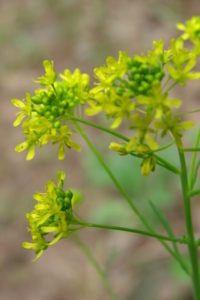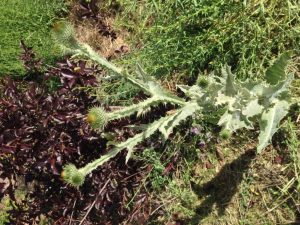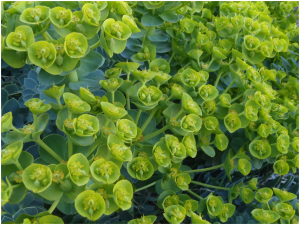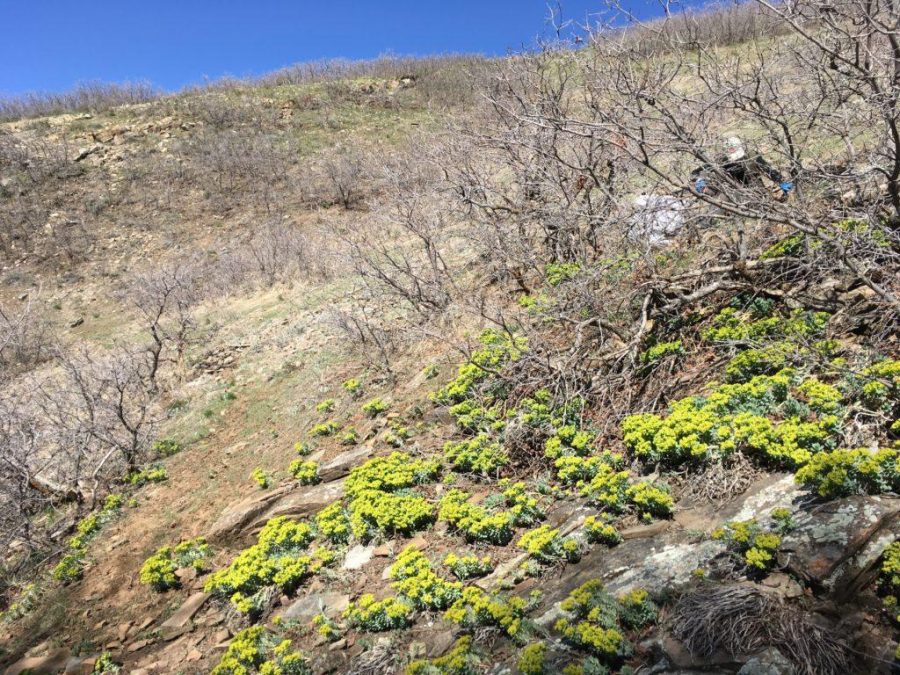Last fall, while taking a homework break to hike around the Bonneville Shoreline trail, I ran into two guys bent over ahead of me. At first, I couldn’t tell if there was something serious going on, but as I got closer, I realized they were leaning over their bikes, trying to pump up their tires.

“This is the fifth time in two weeks that I’ve gotten a flat tire riding on Salt Lake bike trails,” one of the men told me. His tire had a few goat heads, a spiky weed famous for popping tires, sticking into the tube, which he had picked up biking around the city. As spring time starts to approach the valley, it becomes a notorious time for noxious weeds to start spreading around the valley and repopulating.

I sat down with Neal Dombrowski, a botanist at Red Butte Gardens, who told me about some of the weeds they have problems with here in Salt Lake City, which include yellow dtarthistle, myrtle spurge, goat heads, dyers woad, and medusahead.
Most outbreaks of noxious weeds start in wildland-urban interfaces, where human population ends and wildlife begins. The avenues, mouths of the canyons, and Capitol Hill are good examples of this. “Within the city we can contain it, but once it starts creeping into the wild areas, it’s a lot less controllable,” said Dombrowski.
These different kinds of harmful weeds can be a huge problem for mountain bikers, because they could get their bike tires popped; hikers, because certain weeds could cause skin irritation and blistering; animals, because certain noxious weeds could be poisonous; and the environment, because they can kill native plants. Botanists like Dombrowski are able to control weed outbreaks by chemical, mechanical, and biological methods. Chemical methods can include any kind of herbicide, but chemicals don’t always work particularly well at killing weeds, and can have other unknown effects on the environment. Mechanical methods include weed pulling by hand, or using tools such as rakes and vacuums. Biological methods are used when native predators, such as weevils, are introduced to an environment to kill and control a specific weed. There are a few ways we as students can help prevent outbreaks. We can control what grows in our yard, and make sure we get rid of any kind of noxious weed that begins to grow. We can rinse off our shoes and bikes after hitting up different trails to make sure that we aren’t transporting potential seeds. Also, we can report outbreaks that we see before they spread to places like the Shoreline trail, leaving bikers at the risk of getting popped tires.

The most effective way to get rid of weeds is with the help of volunteers. However, one must be very careful not to just go pulling anything that looks like a potential weed. For example, many plants in Utah look like different thistles, and while most thistle plants are no good, there are actually a few native plants to Utah. “Proper identification is key,” said Dombrowski. One good way to figure out whether a certain plant could potentially be a nuisance weed is by emailing Salt Lake County a picture of the weed just to be sure. Last year, weed pulling events hosted by Red Butte Gardens had an average of 37 volunteers, and were sponsored by big names such as REI, KRCL, and the Nature Conservancy. While spending a Saturday pulling weeds may not sound like tons of fun, knowing that I get to help protect the outdoor environment in Salt Lake City (and my bike tires) is enough motivation for me to get out and do it regardless. Anyone interested in learning more can contact Neal at [email protected]



